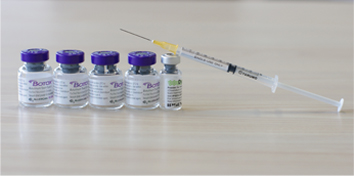Botulinum toxin

What is Botulinum toxin?
Botulinum toxin is produced by the bacteria Clostridium botulinum. Infection by Clostridium botulinum can lead to a potentially fatal disease called botulism.
How does Botulinum toxin work?
Botulinum toxin works by preventing the release of a biochemical called acetylcholine from nerve endings, which in turn stops nerve impulses and the activation of muscle.
How did a lethal toxin become a useful medication?
The possibility of harnessing botulinum toxin as a medical treatment was first suggested by Justinus Kerner in 1820. However, it was not until the early 1980s that botulinum toxin was found to be an effective treatment of strabismus (squint) by injection into eye muscles. Botulinum toxin is now commercial produced for cosmetic applications as well as for the treatment of a number of medical conditions.
What are some conditions that Botulinum toxin is used for?
Due to its mechanism of action, botulinum toxin is an effective treatment for medical conditions caused by overactive muscles such as cervical dystonia (neck muscles), hemifacial spasm (facial muscles), blepharospasm (muscles around the eye) and teeth grinding/jaw clenching (jaw muscles). The use of Botulinum toxin for the treatment of cervical dystonia, hemifacial spasm and blepharospasm is PBS approved.
Is it true that botulinum toxin can be used to treat chronic migraine?
In 2013, botulinum toxin was approved by PBS for the treatment of chronic migraine. The usefulness of botulinum toxin in the treatment of headache was first recognised when patients having cosmetic injections around the forehead and eyebrows reported improvement to their chronic headache. Further research subsequently confirmed the effectiveness of botulinum toxin in the treatment of chronic migraine.

